




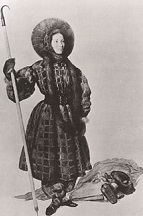
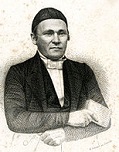
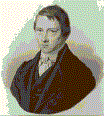
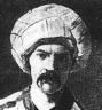
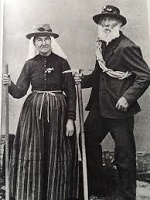
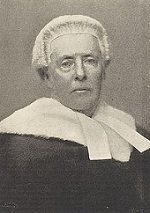

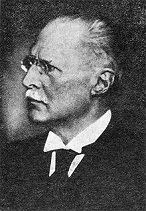
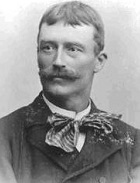
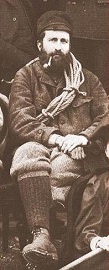
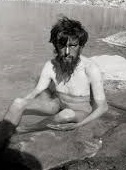
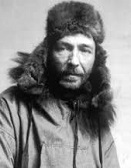



















TLW's Mountain Climberscope™ (Mountain Climber Historyscope) |
By T.L. Winslow (TLW), the Historyscoper™ |
© Copyright by T.L. Winslow. All Rights Reserved. |
Original Pub. Date: Feb. 15, 2017. Last Update: May 1, 2022. |

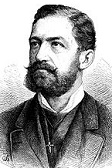
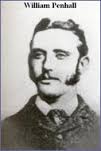
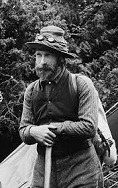
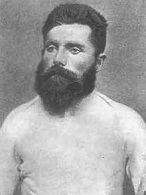
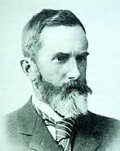
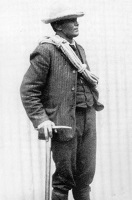
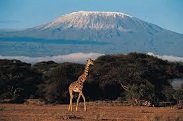

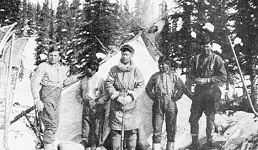


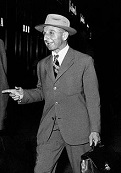
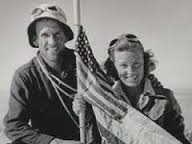
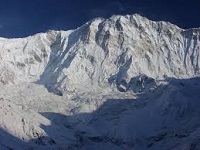
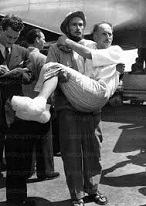
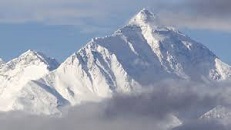
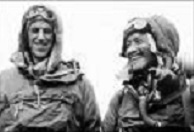
Westerners are not only known as history ignoramuses, but double dumbass history ignoramuses when it comes to mountain climber and mountaineering history. Since I'm the one-and-only Historyscoper (tm), let me quickly bring you up to speed before you dive into my Master Historyscope.
There are 109 mountains on Earth with peaks over 7.2km (23,622 ft.), most located in India and Tibet; the top 10 highest mountains on Earth, incl. Mount Everest (29,029 ft.) (8,848m), K2 (28,251 ft.) (8,611m), Kangchenjunga (28,169 ft.) (8,586m), Lhotse (27,940 ft.) (8,516m), Makalu (27,838 ft.) (8,485m), Cho Oyu (26,864 ft.) (8,188m), Dhaulagiri I (26,795 ft.) (8,167m), Manaslu (26,781 ft.) (8,163m), Nanga Parbat (26,660 ft.) (8,120m), and Annapurna I (26,545 ft.) (8,091m). The top 10 highest mountins in the Andes incl. Aconcagua (6,962m), Ojos del Salado (6,891m), Monte Pissis (6,792m), Huascaran (6,768m), Bonete (6,759m), Tres Cruces (6,758m), Llullailaco (6,739m), Mercedario (6,720m), Cazadero (6,658m), and Incahuasi (6,638m). In contrast, the puny top 10 highest mountains in North Am., incl. Denali (Mount McKinley) (20,310 ft.) (6,190.5m), Mount Logan (19,541 ft.) (5,956m), Pico de Orizaba (Citlalepetl) (18,491 ft.) (5,636m), Mount Foraker (17,400 ft.) (5,304m), Mount Lucania (17,257 ft.) (5,260m), and Iztaccihuatl (17,159 ft.) (5,230m). Way more puny are the top 10 highest mountains in the Alps, incl. Mont Blanc (4,808m), Monte Rose (Dufourspitze) (4,634m), Dom (4,545m), Liskamm (4,527), Weisshorn (4,506m), Matterhorn (4,478), Dent Blanche (4,357m), Grand Combin (4,314m), Finsteraarhorn (4,274m), and Zinalrothom (4,221m).

In 663 an anon. monk becomes the first to ascend 12,389 ft. (3,776m) Mount Fuji on Honshu Island in Japan 60 mi. SW of Edo (Tokyo), known for its exceptionally symmetrical cone.

On Apr. 26, 1336 Italian humanist poet Petrarch (Francesco Petrarca) (1304-74), his brother, and two servants climb to the summit of windy 1,912m Mount Ventoux overlooking the Bay of Marseilles, with Petrarch claiming to be inspired by Philip V of Macedon (-238 to -179)'s ascent of Mount Haemo in the Balkans,, sitting on top to read St. Augustine's "Confessions", discovering that "nothing is wonderful but the soul, which, when great itself, finds nothing great outside itself", after which "not a syllable fell from my lips until we reached the bottom again", the descent signifying the real start of the Renaissance?; Petrarch becomes the first known Alpinist, one who climbs mountains merely for enjoyment?; a local told him that nobody had ascended it before he did it 50 years earlier, although French priest Jean Buridan (1295-1363) did it a few years earlier, and in the 11th cent. it had been done by St. Anno II (1010-75), archbishop of Cologne.
In 1492 Antoine de Ville, lord of Domjulien and Beaupre leads a team that becomes the first to ascend 2,085m Mont Aiguille in SW France 36 mi. S of Grenoble, using ladders and ropes, launching the sport of mountaineering?

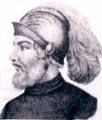



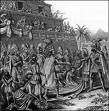

In Feb. 1519 Spanish conquistador Hernan Cortes (Hernán Cortés) (1485-1547) renounces the authority of Diego de Velazquez, relocates the city of Havana (from the Indian name Guanabacoa meaning "site of the waters") in Cuba to the N coast as a Spanish naval base (modern pop. 2M), then takes off with on 11 ships with 400-600 men (70 musketeers, 40 crossbowmen, and several hundred Indian and Cuban servants), incl. 2nd-in-command Pedro de Alvarado y Contreras (1495-1541) and chronicler Bernal Diaz del Castillo (1496-1584) for New Spain (Mexico), and on Apr. 21 he lands in Veracruz with his well-armed men, 16 horses, 14 pieces of artillery, and a big pair of balls, and founds the city of Villa Rica de la Veracruz (Vera Cruz) (Sp. "true cross") in Mexico after burning his own ships to keep his men from returning to Cuba; after his soldiers elect him as chief magistrate and send reps to the crown for confirmation, Cortes leaves a small garrison then begins travelling through Aztec villages, finding altars piled with skulls and smelling of rotten blood mixed with flowers while sending envoys to Emperor Montezuma (Moctezuma) II (1480-1520, who is zapped out by the belief that these white dudes are gods and Cortes is pale-faced feathered-serpent man-god Quetzalcoatl (whose arrival is predicted by the Mayan priests this year after some lost Viking stumbled ashore long ago?), and avoids confrontation; Cortes gains support from the Totonacs, then ends up in 11K-ft. mountains where their clothing is inadequate, and several servants die, then crosses desert salt lakes without food and water, until he comes to the independent city of Tlaxcala, and faces 149K fierce warriors with obsidian clubs and spears, holding out for two weeks on a little hill until they suddenly give up, welcome him as a friend, and offer him their daughters, then offer to help him fight their worst enemies the Aztecs (Mexica); on Mar. 12 Cortes and his men arrive in Potonchan (Potonchán) on the left bank of the Grijalva (Tabasco River), finding them hostile, after which on Mar. 25 they win a V over the Aztecs at the Battle of Centla, where Diego de Ordaz (1480-1532) distinguishes himself, going on to climb 17,802 ft. (5,426m) Popocatepetl (Popocatépetl) in C Mexico 40 mi. SE of Mexico City with two comrades, becoming the first white Euros, impressing Cortes native allies, after which HRE Charles V authorizes Ordaz to pus the volcano on his coat of arms; after passing through the narrow streets of Cholula (known for its Great Pyramid) Cortez and his men meet fierce resistance, incl. rooftop ambushes, and kill 3K and sack it, the news reaching Montezuma, who says his heart is "washed in chilies" with grief; Cortes brings horses to the Am. mainland for the first time?
In 1573 Capt. Francesco De Marche and Francesco Di Domenico of Bologna, Italy ascend Corno Grande, highest peak in the Italian peninsula.
On Dec. 16, 1707 after Osaka suffers a violent earthquake on Nov. 11, Mt. Fuji (Fujiyama) erupts, pouring lava and ashes into Edo 60 mi. away, but there are no fatalities, becoming its last eruption until ?.





In 1746 20,548 ft. (6,263m) Mount Chimborazo on the equatorial bulge in the Cordillera Occidental range of the Andes in Ecuador (whose summit is the point on the Earth's surface farthest from the Earth's center) is climbed by French academicians of the French Geodesic Mission to determine whether the Earth is spherical or oblate along with another team in Lapland, but they do not reach the summit; in 1802 an expedition led by Baron Alexander von Humboldt (1769-1859) reaches 5,875m, a record for Euros, giving up after suffering from altitude sickness; in 1831 Jean-Baptiste Joseph Dieudonne Boussingault (1801-87) reaches a new record of 6,006m; on Jan. 4, 1800 an expedition led by English mountaineer Edward Whymper (1840-1911) reaches the summit, becoming the first Euros to summit a mountain higher than 20K ft.; after some critics express doubt, he does it again later in the year. In 1747 French scientists Pierre de Maupertuis (1698-1759) (whose portrait bears a striking resemblance to actor Bob Hope (1903-2004)?) and Alexis Claude Clairaut (1713-65) return from expeditions to Peru and Lapland with proof that the Earth is oblate as predicted by Newton, not ovoid as predicted by Descartes - he laid an egg?

In 1757 Conches (near Geneva), Switzerland-born geologist Horace-Benedict de Saussure (1740-99) makes his first tour of Mont Blanc in the Alps of Savoy, carrying out physics experiments and devising an electrometer; in 1774 he tries to ascend Mont Blanc on the Italian side, settling for the Crammont in 1774 and 1778, the Buet in 1776, and Roche Michel above Mount Cenis Pass in 1780; in 1785 after making another unsuccessful attempt on Mont Blanc, he offers a reward, becoming known as "the Father of Alpinism".



On Aug. 8, 1786 after a reward is offered by Swiss mountaineer Horace-Benedict de Saussure, 4,808m (15,774 ft.) Mont Blanc ("white mountain") near the French-Italian border, highest mountain in the Alps and W Europe is first ascended by Savoyards Jacques Balmat (1762-1834) and 3-time loser Michel-Gabriel Paccard (1757-1827), causing the king of Sardinia to give Balmat the title "le Mount Blanc", and the nearby town of Chamonix in E France to boom, launching modern mountaineering; on July 14, 1808 Marie Paradis (1778-1839) of Chamonix becomes the first female to reach the summit, along with Balmat, getting so sick that she begs to be thrown into a crevasse, but later becoming rich and famous, known as Mmaria de Mont Blanc; in 1838 Henriette d'Angeville (1794-1871) of Geneva becomes the 2nd woman to reach the summit, receiving congratulations from Paradis; by modern times it is ascended by 20K people/year.
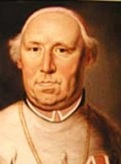
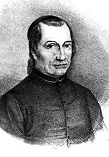
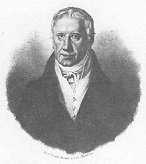
On July 23, 1799 an expedition led by Salzburg (Gurk) prince-bishop Count Franz Xaver of Salm (1749-1822), his vicar gen. of Klagenfurt Sigismund Ernst Hohenwart (1745-1825), and scientist Baron Xaver von Wulfen (1728-1805) reaches the summit of the 23,370 ft. (3,770m) Kleinglockner, 3rd highest mountain in Austria; on July 28, 1800 another expedition led by Austrian teacher Franz Michael Vierthaler (1758-1827) and German physician-botanist David Heinrich Hoppe (1760-1846) leaves, climbing the 12,461 ft. (3,798m) Grossglockner, highest mountain in Austria and highest in the Alps E of the Brenner Pass.
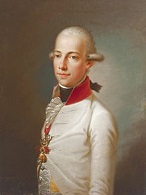
On Sept. 27, 1804 after five failed attempts and a reward offered by Archduke
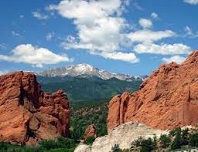


On July 15, 1806 N.J.-born Lt. Zebulon Montgomery Pike (1779-1813) leaves St. Louis to explore New Mexico looking for the sources of the Arkansas River; on Nov. 15 he sights 14,109 ft. (4,267m) pink granite Pikes Peak (El Capitan to the Spanish, which he calls Highest Peak because it's higher thany any peak in the U.S. to the E) in S Colo. (64 mi. S of Denver), but fails in an attempt to climb it, declaring that it will never be climbed (the Utes probably did it all the time to get eagle feathers?), then makes a roundabout return by way of Santa Fe after Spanish soldiers capture his party; his accounts are pub. before those of Lewis and Clark, creating the myth that the Am. West is a "Great American Desert" unfit for human habitation (and hence the place to banish Indian tribes to); in summer 1820 Vt.-born botanist Edwin P. James (1797-1861) becomes the first to climb it while working for explorer Stephen Harriman Long (1784-1864) on his expedition "from the Mississippi to the Rocky Mountains", discovering the health benefits of the mineral waters in Manitou Springs, Colo., and making the first ascent of 13,3K ft. (4,054m) James Peak.
On Aug. 3, 1811 13,642 ft. (4,158m) Mount Jungfrau ("virgin") in the Bernese Alps is scaled by the Meyer brothers of Arau and two chamois hunters from Valais; in 1865 a more direct route on the N side is opened.
On Aug. 16, 1812 the 14,022 ft. (4,274m) Finsteraarhorn, highest mountain in the Bernese Alps of Switzerland is climbed by a team led by Aargau merchant Rudolph Meyer, incl. Joseph Bortes and Aloys Volker, who had been on the Jungfrau climb in 1811; Meyer becomes exhausted and stops at Meyer's Peak while the rest reach the summit; in 1913 John Percy Farrar claims that they only reached a shoulder 200m below the summit.
In 1813 the 13,661 ft. (4,164m) Breithorn ("broad horn") in the Pennine Alps on the Swiss-Italian border is first climbed by a party led by Henry Maynard.

On Aug. 13-15, 1842 13,745 ft. (4,189m) Fremont Peak in Wyo. is first climbed by Am. explorer John Charles Fremont (1813-90) et al.


In May 1848 after becoming the first Euros to enter Africa in 1846 via the Indian Ocean along with fellow Lutheran missionary Johann Ludwig Krapf, German missionary Johannes Rebmann (1820-76) becomes the first Euro to sight Mount Kilimanjaro; too bad, he is ridiculed for the next 12 years; on Dec. 3, 1849 German missionary Johann Ludwig Krapf (1810-81) becomes the first Euro to sight Mount Kenya.
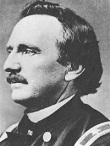
In 1848 U.S. Army topographical engineer William Franklin Raynolds (1820-94) leads a party that ascends 18,491 ft. (5,636m) Pico de Orizaba (citlaltepetl) on the border between Veracruz and Puebla, tallest mountain in Mexico, setting an Am. alpine alt. record that lasts for 50 years.

In 1853 after undergoing circmcision and dressing up as a Pashtun, multilingual English explorer-scholar-diplomat Capt. Sir Richard Francis Burton (1821-90) (educated at Trinity College, Oxford U.) becomes the first non-Muslim since 1503 to visit Mecca and Medina in disguise and live to talk about it - I bring you sweet things from my candy jar? On June 27, 1857 British explorers Sir Richard Francis Burton (1821-90) and John Hanning Speke (1827-64) begin to search for the source of the White Nile, setting out from the E coast of Africa, going on to obtain help from Omani Arabs and suffer from tropical diseases. In Feb. 1858 Burton and Speke discover Lake Tanganyika; Speke follows native advice and discovers Lake Victoria (Nyanza) alone, identifying it as the long-sought source of denial, er, the Nile - without speaking to Richard? In 1861 Burton becomes the first Euro to climb 13,255 ft. (4,040m) Mount Cameroon (Mongo ma Ndemi = mountain of greatness).

In Sept. 1854 the 3,692m Wetterhorn (Hasle Jungfrau) in the Swiss Alps is allegedly first climbed by English judge Sir Alfred Wills (1828-1912), who pub. "Wanderings Among the High Alps" in 1856, making mountaineering fashionable in Britain and launching the Golden Age of Alpinism (ends 1865); too bad, it was first summitted by Hans Juan and Melchior Bannholzier on Aug. 31, 1844; Wills goes on to preside over the 1895 Oscar Wilde indecency trial.
On Dec 22, 1857 the Alpine Club is founded in London, England, becoming the world's first mountaineering club; in 1975 it merges with the Ladies' Alpine Club.

On Aug. 11, 1858 the 13,020 ft. (3,970m) Eiger (Ger. "ogre") Mt. in the Bernese Alps is first climbed by Swiss climbers Christian Almer (1826-98) and Peter Bohren, and Irish merchant Charles Barrington (1834-1901) (west face); the north face is climbed in 1938 by an Austrian-German expedition; since 1935 64+ climbers have died attempting the north face, earning it the nickname "Mordwand" (murder wall); Almer goes on to summit the Monch (1857), Gross Fiescherhorn (1862), Barre des Ecrins (1864), Aiguille Verte (Mont Blanc Massif) (1865), Grand Cornier (1865), Nesthorn (1865) et al.; in 1898 72-y.-o. Almer summits the Wetterhorn.

On July 14, 1865 a British party led by artist Edward Whymper (1840-1911) makes the first ascent of the Matterhorn in the Alps on the Swiss-Italian border on his 8th attempt; too bad, on their descent four members fall to their deaths, and Whymper and two others luck out when the rope attaching them to the others breaks, ending the Golden Age of Alpinism (begun 1854) - home is a suitcase, a journey?

In 1866 Canadian-born English mountaineer Lucy Walker (1836-1916) becomes the first female to summit the Swiss Wetterhorn.
On June 6, 1882 8,878-ft. Mount Cinto, the highest peak in Corsica is scaled by Edouard Rochat; next May 26 English mountaineer Francis Fox Tuckett leads a party that ascends via Tuckett Pass.

On Aug. 3, 1882 English mountaineer William Penhall (b. 1858) and his Meiringen guide Andreas Maurer are killed on the Wetterhorn by an avalanche.
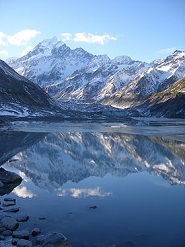


In 1882 Irish mountaineer Rev. William Spotswood Green (1847-1919) makes an unsuccessful attempt with two Swiss guides of 12,349 ft. (3,764m) Mount Cook (Aoraki), highest mountain in New Zealand; on Dec. 25, 1894 a party led by Kiwi mountaineer Thomas Camperdown "Tom" Fyfe (1870-1947) becomes the first to climb it; too bad, in Dec. 1991 a rockslide reduces its height to 12,218 ft. (3,724m).
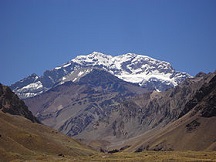



In 1883 a party led by German geologist Paul Gussfeldt (Güssfeldt) (1840-1920) makes two attempts to summit 22,838 ft. (6,961m) Mount Aconcagua in Argentina (70 mi. NW of Mendoza) 9 mi. from the border with Chile, highest mountain outside Asia, reaching 6.5km; in Dec. 1896 a European expedition led by Am.-born English mountaineer Edward Arthur FitzGerald (1871-1931) makes the first of eight attempts, with Swiss guide Matthias Zurbriggen (1856-1917) reaching the summit on Jan. 14, followed on Feb. 13 by Stuart Vines and Nicola Lanti.



On Oct. 6, 1889 German explorer and geologist Hans Heinrich Josef Meyer (1858-1929) and Austrian mountaineer Ludwig Purtscheller (1849-1900) become the first to scale dramatic 19,341 ft. (5,895m) Mount Kilimanjaro, Africa's highest mountain, in Tanganyika between Lake Victoria and the Indian Ocean 130 mi. SSE of Nairobi, rising 16K ft. from the surrounding terrain, formed from three extinct volcanoes, and consisting of two volcanic peaks 7 mi. apart, Kibo (19,335 ft.) and Mawenzi (16,893 ft.), plus a distant 3rd, Shira (12,999 ft.); despite being near the equator, it has permanent glaciers, as does 2nd highest Mt. Kenya; after scaling Kibo, Mayer names it Kaiser Wilhelm Spitze (Kaiser Wilhelm Peak) after Wilhelm I, which is changed to Uhuru Point in 1961; an attempt to climb Mawenzi only reaches Klute Peak, causing Mawenzi's highest summit to be named Hans Meyer Peak, which is first climbed in 1912; Kibo isn't claimed again until 1909.
In 1894 Winston Churchill summits the Wetterhorn.

In 1897 Italian mountaineer Luigi Amedeo Giuseppe Maria Ferdinando Francesco, Duke of the Abruzzi (1873-1933) makes the first ascent of Mt. St. Elias (Boundary Peak 186) 25 mi. SW of Mt. Logan on the Yukon-Alaska border.
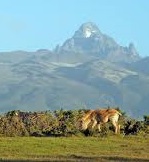

On July 28, 1899 an expedition led by English geographer Sir Halford John Mackinder (1861-1947) sets out from Nairobi, reaching the summit of 17,057 ft. (5,199m) Batian Peak on Mount Kenya (2nd highest in Africa) on Sept. 13.
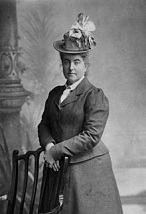
In 1899 wealthy Am. mountaineer and suffragist Fanny Bullock Workman (1859-1925) (one of the first prof. female mountaineers) begins ascents in the Himalayas, summitting 23,409 ft. (7,135m) Nun Kun Massif in 1906, and claiming an ascent of 22,736 ft. (6,930m) Pinnacle Peak.


In June 1902 a team led by English mountaineer Oscar Johannes Ludwig Eckenstein (1859-1921) (inventor of the modern crampon and friend of Aliester Crowley) and Swiss physician Jules Jacot-Guillarmod (1868-1925) reaches the base of K2; they don't summit, but Jacot-Guillarmod's photgraphs make the region famous, causing more attempts; on July 10, 1906 Eckenstein et al. make the first ascent of 4,069m Mont Brouillard (Fr. "mountain of mist") in the Val d'Aosta of Italy on the S ridge of Mont Blanc.


On July 31, 1905 the 1905 Kanchenjunga Expedition, consisting of Swiss physician Jules Jacot-Guillarmod (1868-1925), English occultist Aleister (Edward Alexander) Crowley (1875-1947) et al. sets out with 230 porters and three Kashmiri servants, making camp at Camp V on Sept. 1 at 6,200m, after on Sept. 2 an avalanche kills three porters and Alexis Pache, and the attempt fails, with cruel "Do what thou wilt" Crowley stealing the expedition funds and later claiming in his autobio. that they reached 7,620m, an altitude record not broken until the 1922 British Mount Everest expedition in 1922.
In 1907 the Ladies' Alpine Club is founded in London, England; in 1975 it merges with the Alpine Club.



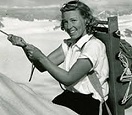
On June 7, 1913 British-born Episcopal priest Hudson Stuck (1863-1920) (archdeacon of the Yukon and the Arctic since 1904), Am. climbing guide Henry Peters "Harry" Karstens (1878-1955), Alaskan native guide Walter Harper (1893-1918), and Am. Episcopal priest-missionary Robert George Tatum (1891-1964) (who stiched together a U.S. flag from climbing gear materials) become the first to reach the summit of 20.5K-ft. Mt. McKinley AKA Mt. Denali (Athabascan "the great one") in Alaska, the highest peak in North Am., going by the South Summit; in 1940 Am. mountaineer Henry Bradford Washburn Jr. (1910-2007) (founder of the Boston Museum of Science) honeymoons in Alaska with new wife Barbara Washburn (nee Polk) (1914-2014), making the first ascent of Mount Bertha together, followed in 1941 by Mount Hayes; on June 6, 1947 she becomes the first woman to summit Mount McKinley (Denali); in 1951 he summits the West Buttress route, which becomes the most popular - don't get stuck?


On June 8, 1924 English mountaineer George Herbert Leigh Mallory (b. 1886) of Cambridge U. and Oxford U. student Andrew Comyne "Sandy" Irvine (b. 1902) attempt to reach the top of 29K-ft. Mt. Everest from their camp at 26.8K ft. (the Death Zone begins at 26K ft.) using the North to Northeast Ridge route; neither return; the body of Mallory is found May 1, 1999 on a ledge on the N face at 26,760 ft.; Mallory earlier claimed he wants to climb it "because it is there" ("the most famous four words in mountaineering").

In 1931 Franz Schmid (1905-92) and his brother Toni Schmid (1909-32) climb the N face of the Matterhorn for the first time, and are awarded a gold medal for mountaineering next year at the Los Angeles Olympics 75 days after Toni is killed in a climbing accident on May 16, becoming the first posth.-awarded Olympic medal (until ?).


On June 3, 1950 26,545 ft. (8,091m) Annapurna ("goodess of the harvest", "full of food") I in the Himalayas of NC Nepal (10th highest mountain on Earth) is first climbed by a French team led by Maurice Herzog (1919-2012) and Louis Lachenal (1921-55), breaking the 8Km barrier.

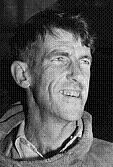


Because it's there? On May 29, 1953 34-y.-o. Kiwi beekeeper Edmund Percival "Ed" Hillary (1919-2008) and his Nepalese Sherpa guide Tenzing Norgay (Norkay) ("wealthy fortunate follower of religion") (Namgyal Wangdi) (1914-86) become the first to scale 29K ft. Mt. Everest (Chomolungma) on the Nepal-Tibet border in the Himalayas (world's highest mountain), leaving the flags of the U.N., U.K., India, and Nepal; the news is announced on the day of Elizabeth I's coronation (June 2), and Hillary is knighted along with Col. Henry Cecil John Hunt (1910-98) of the British Army, leader of the Royal Geographical Society-sponsored expedition.


On July 31, 1954 K2 (Mt. Godwin-Austen) (Dspsang) in the Himalayas (Karakorams) on the China-Pakistan border, 2nd highest mountain on Earth after Mount Everest (8,611m) (28,251 ft.) is first climbed by an Italian team led by Count Ardito Desio (1897-2001).
On Oct. 19, 1954 Cho Oyu (Tibetan "Turquoise Goddess"), on the Chinese-Nepalese border 12 mi. W of Mt. Everest (world's 6th highest mountain) is first climbed by an Austrian expedition.
On May 13, 1960 a Swiss-Austrian expedition led by Max Eiselin makes the first ascent of Mt. Dhaulagiri (Sansk. "dhawala" = dazzling white, beautiful) in Nepal, #7 highest mountain on Earth.

On May 1, 1963 U.S. climber James "Big Jim" Whittaker (1929-) and three others (incl. a Sherpa guide) finally scale Mt. Everest after running out of oxygen, becoming the first Yankee to conquer the pesky widow-making peak.
On May 2, 1964 a Chinese expedition led by Xu Jing becomes the first to climb 26,335 ft. (8,027m) Mount Shishapangma ("meat of dead animals and malty dregs") (AKA Gosainthan or Abode of God) in Tibet, 14th highest mountain on Earth, using the northern (easiest) route, becoming the last 8km peak to be climbed.


On May 21, 1970 Donald Desbrow "Don" Whillans (1933-85) of England and Dougal Haston (1940-77) of Scotland become the first persons to scale 26,504-ft. Annapurna I in the Himalayas by the S side.
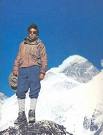
On May 5, 1973 18-y.-o. Nepalese Sherpa Shambhu Tamang (1955-) becomes the youngest person to climb Mt. Everest; he does it again as an old-timer on Dec. 28, 1985.
On May 4, 1974 an all-woman Japanese team led by Kyoko Sato, incl. Naoko Nakaseko, Masako Uchida, and Mieko Mori becomes the first women to climb 8,163m (26,781 ft.) Mt. Manaslu ("mountain of the spirit") in Nepal, 8th highest on Earth; the first ascent was made on May 9, 1956 by the male Japanese team of Maki Yuko and Toshio Imanishi, along with Sherpa Gyaltsen Norbu.
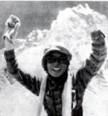
On May 16, 1975 Junko Tabei (1939-2016) of Japan becomes the first woman to reach the summit of Mount Everest (22 years after a man did it); she goes on to ascend the highest peak on all seven continents.

On July 24, 1987 91-y.-o. Calif. mountaineer Hulda Hoehn Crooks (1896-1997) AKA Grandma Whitney becomes the oldest woman to conquer Mount Fuji, Japan's highest peak.
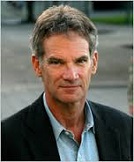
On May 10-11, 1996 after being caught in a blizzard, eight people die on 29,035-ft. Mount Everest in the deadliest single tragedy so far in its history; U.S. climber Ed Viesturs survives, and scales the mountain 6x by 2005; the area above 26K ft. is called the "death zone"; Jon Krakauer (1954-) pub. the 1997 bestseller Into Thin Air: A Personal Account of the Mt. Everest Disaster about the tragedy.
On May 23, 2001 after losing five fingers a year earlier, 16-y.-o. Sherpa Temba Tsheri (1985-) becomes the youngest person to climb Mount Everest (until ?).
On May 12, 2005 45-y.-o.Ed Viestursof Bainbridge Island, Wash. becomes the first Am. to scale all of the world's 14 peaks higher than 26,240 ft., reaching the 26,540-ft. summit of Mt. Annapurna in Nepal.
On May 14, 2005 Didier Delsalle becomes the first person to land a helicopter on the summit of Mount Everest (until ?).
My life on the D-list, only on Bravo? On May 15, 2006 British mountaineer David Sharp (b. 1972), on his 3rd straight attempt to summit Mt. Everest dies about 1K ft. into his descent in an alcove near the summit at 29,760 ft. holding Indian climber Green Boots, who died in 1996; before he dies, 40 people walk past him, and only one team gives him some oxygen, that of Kiwi mountaineer Mark Joseph Inglis (1959-), the first double amputee to reach the summit; the same day Maxime Chaya (with Sherpa guide Dorjee) becomes the first Lebanese citizen to reach the summit, and on their way down he, Russell Brice and Sherpa guide Dorjee find Sharp still alive but unconscious, spending an hour with him and giving him oxygen; a Turkish team led by Sherpa guide Nima visits him on their descent, finding him unconscious; Brice's chief Sherpa guide Phurba Tashi then visits him at 11:45 a.m., and find him conscious and talking, but can't get him on his feet, so they give him oxygen and move him into the sunlight, where the next visitors find him dead; he becomes the 190th person to die on the attempt to reach the summit, with more than 1.5K making it since Hillary in 1953; on May 25 Australian climber Lincoln Hall (b. 1956)
On May 19, 2006 Sherpa guide Appa (1961-) scales Mt. Everest for a record 16th time; on Apr. 6, 2009 he does it for the 19th time - I'm appa to see ya?
On Aug. 3, 2008 nine K-2 climbers are killed after an avalanche cuts their ropes.
On May 18, 2013 Raha Muharraq (1987-) becomes the first Saudi woman to summit Mt. Everest.
On Apr. 20, 2014 an avalanche on Mt. Everest kills 12 Sherpa guides and injures three, becoming the deadliest single accident (until ?).
In 2015 no one summits Mount Everest (last year of no summits: 1974).
On June 3, 2017 Alex Honnold scales El Capitan sans ropes or gear.
On Apr. 20-May 27, 2019 the Mount Everest mountainaineer death toll reaches 11.